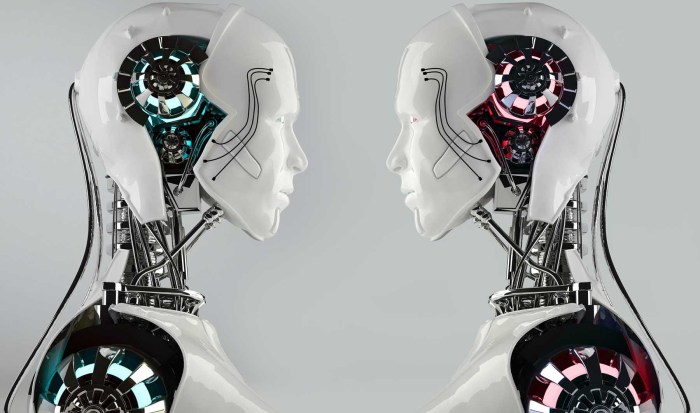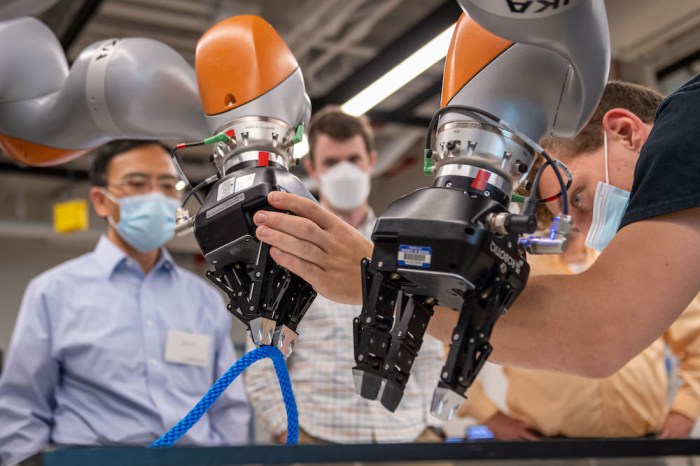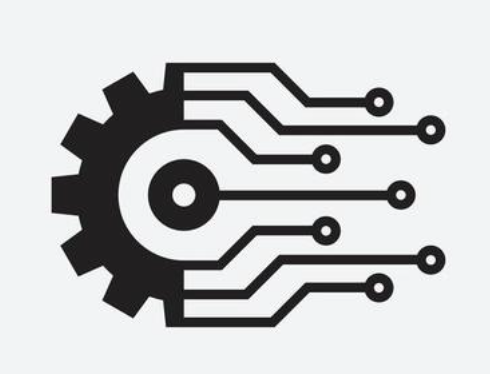Robotics, the science and engineering of robots, has revolutionized industries and transformed our lives. From the earliest mechanical devices to sophisticated artificial intelligence-powered systems, robotics has consistently pushed the boundaries of what’s possible.
This exploration delves into the history, types, components, applications, and future potential of robotics, showcasing its impact on various sectors, including manufacturing, healthcare, and space exploration.
Robotics Components
Robotics, the field of designing, constructing, operating, and applying robots, encompasses a wide range of applications, from industrial automation to healthcare and space exploration. At the core of every robotic system lies a sophisticated interplay of components that work together to achieve specific tasks.
These components, acting as the building blocks of robots, are responsible for their movement, perception, and decision-making capabilities.
Actuators
Actuators are the muscles of a robot, responsible for generating motion. They convert electrical or hydraulic energy into mechanical energy, enabling the robot to move its limbs, manipulate objects, or perform other physical actions.
- Electric Motors:These are the most common type of actuator used in robots. They use electromagnetic principles to generate torque and rotation, powering joints and wheels.
- Hydraulic Actuators:These actuators use pressurized fluids to generate linear or rotational motion, offering high power output for heavy-duty tasks.
- Pneumatic Actuators:These actuators utilize compressed air to generate motion, providing fast and precise movement for applications like gripping and lifting.
Sensors
Sensors act as the sensory organs of a robot, providing it with information about its surroundings and internal state. They convert physical quantities, such as light, temperature, pressure, or distance, into electrical signals that the robot can interpret.
- Vision Sensors (Cameras):These sensors capture visual information, allowing robots to perceive objects, navigate environments, and perform tasks requiring visual recognition.
- Proximity Sensors:These sensors detect the presence of objects without physical contact, using technologies like ultrasonic waves, infrared light, or laser beams.
- Tactile Sensors:These sensors provide information about touch and force, enabling robots to manipulate objects delicately and detect collisions.
- Temperature Sensors:These sensors measure the temperature of the robot’s environment or internal components, crucial for safety and performance.
Controllers
Controllers are the brains of a robot, responsible for processing sensory data, making decisions, and commanding actuators. They use algorithms and software to interpret information from sensors, plan actions, and control the robot’s movements.
- Microcontrollers:These are small, embedded computers designed specifically for controlling robotic systems. They provide computational power, memory, and interfaces for communication with sensors and actuators.
- Programmable Logic Controllers (PLCs):These are industrial-grade controllers used in complex robotic applications, offering robust performance and reliability.
- Artificial Intelligence (AI) Systems:Advanced robots often utilize AI algorithms for decision-making, enabling them to learn from experience, adapt to changing environments, and perform complex tasks autonomously.
Power Sources, Robotics
Power sources provide the energy needed for the robot to operate its actuators, sensors, and controllers.
- Batteries:These are portable and rechargeable energy sources, commonly used in mobile robots and smaller systems.
- Fuel Cells:These devices convert chemical energy into electrical energy, providing longer run times compared to batteries.
- Power Lines:These are wired connections that provide continuous power to robots, often used in industrial settings.
Robotics and Artificial Intelligence

The integration of artificial intelligence (AI) into robotics has revolutionized the field, ushering in a new era of intelligent machines capable of performing complex tasks and adapting to dynamic environments. AI empowers robots with enhanced perception, decision-making, and learning capabilities, enabling them to operate more autonomously and efficiently.
AI Enhancement of Robotic Capabilities
AI significantly enhances robotic capabilities by providing them with advanced cognitive functions. These functions allow robots to perceive their surroundings, make informed decisions, and learn from experience.
- Perception:AI-powered robots leverage computer vision, natural language processing, and sensor fusion to perceive and interpret their environment. Computer vision enables robots to “see” and understand objects, while natural language processing allows them to comprehend human instructions and interact with humans verbally.
Sensor fusion combines data from multiple sensors to provide a more comprehensive understanding of the environment. For example, self-driving cars utilize AI-powered perception systems to identify obstacles, traffic signals, and pedestrians, ensuring safe navigation.
- Decision-Making:AI algorithms empower robots to make complex decisions based on real-time data and prior knowledge. Machine learning techniques enable robots to learn from past experiences and adapt their decision-making strategies to optimize performance. For instance, in industrial settings, AI-powered robots can optimize production processes by adjusting parameters based on real-time data, minimizing downtime and maximizing efficiency.
- Learning:AI algorithms allow robots to learn and improve their performance over time. Reinforcement learning enables robots to learn through trial and error, while supervised learning allows them to learn from labeled data sets. For example, robotic arms used in manufacturing can learn to perform tasks with greater precision and speed through repeated training sessions, continuously refining their movements and adapting to changes in the environment.
Wrap-Up

As robotics continues to evolve, its influence on society will only grow. The integration of artificial intelligence and the development of advanced robotic systems hold the promise of solving complex challenges, improving human lives, and shaping a future where robots play an increasingly integral role.
Q&A
What are the main types of robots?
Robots can be categorized based on their applications and functionalities, including industrial robots, service robots, medical robots, and specialized robots designed for specific tasks.
What are the ethical concerns surrounding robotics?
Ethical considerations in robotics include job displacement, privacy concerns, autonomous weapon systems, and the potential for robots to make decisions that could harm humans.
What are some potential future applications of robotics?
Robotics has the potential to revolutionize healthcare, space exploration, and everyday life, with applications ranging from personalized medicine and assistive devices to robotic companions and autonomous transportation.
